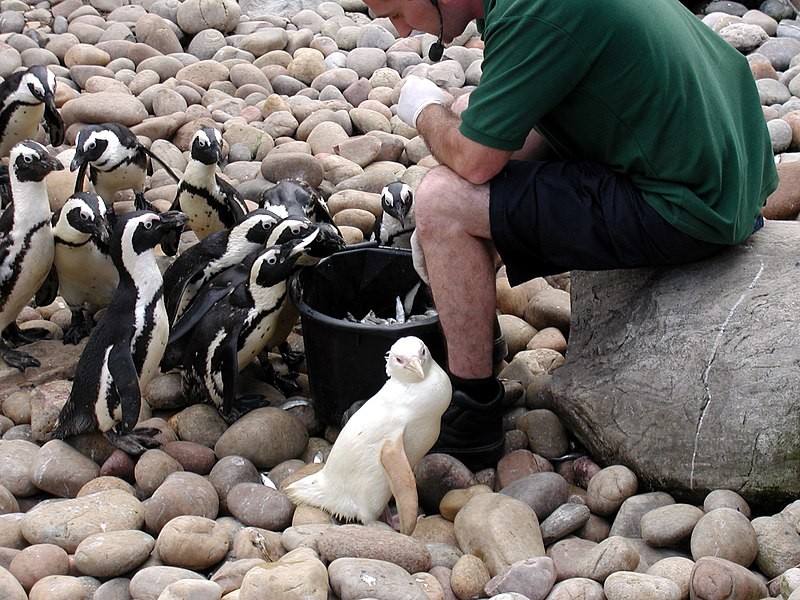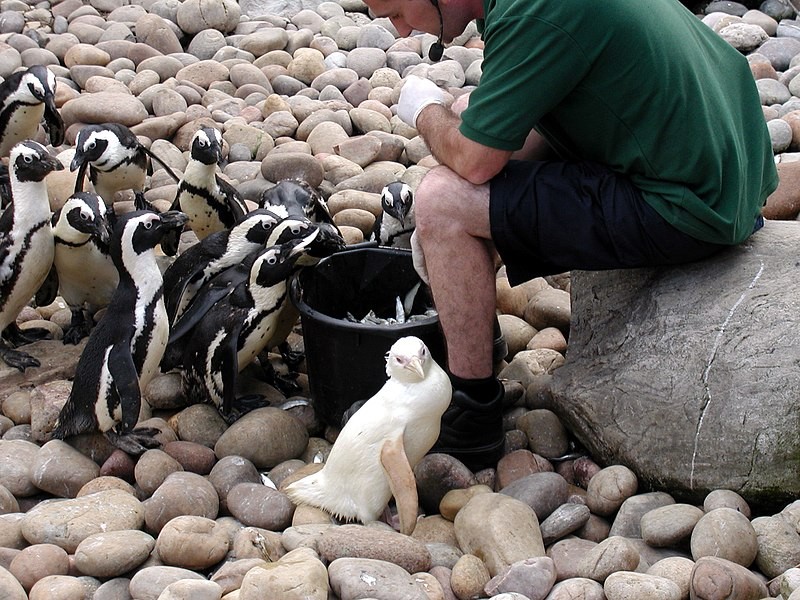[ad_1]
A white penguin with a rare genetic mutation called “leucism” was spotted by researchers this year at a scientific base in Antarctica, according to reports earlier this week. This flightless bird belongs to the Gentoo species and was reportedly visible in a crowd of other penguins seemingly wearing black-and-white tuxes.
Scientists found the bizarre animal at the Gonzales Videla Antarctic base on January 4.
In animals, biologists describe leucism, as well as albinism, as a state of having white or pale-colored fur, plumage, or skin. Unlike albinism, which is considered by many as the complete absence of melanin or pigment, leucism is the lack or partial loss of pigmentation since it affects melanin-producing cells. Melanin is a substance that provides pigmentation in one’s eyes, hair, and skin.
These rare genetic mutations remain a mystery in the field of evolutionary biology. In the context of animals suffering from either leucism or albinism, scientists are uncertain if these pigment-altering conditions have an evolutionary advantage or not. For instance, wildlife experts assert that having a white coat of feathers or skin can make an animal more vulnerable to predators.
White Penguin in Antarctica

The rare white penguin stood out among the rest of its colony of black and white penguins with orange beaks in the icy continent. Researchers at the Gonzales Videla Antarctic base noticed a female gentoo penguin that looks different since its body is almost complete white. It is unclear if there are other flightless penguins with leucism in the continent right now.
As mentioned earlier, the main concern for the pigment-lacking Antarctic penguin is its susceptibility to predation, with the gentoo penguin’s main predators being killer whales or orcas, leopard seals, and sea lions. The issue is that predators can easily see and target their prey regardless it has leucism or albinism since their color will be noticeable.
Also Read: Throwback: Dindim the Penguin Travels 5,000 Miles Every Year to Visit His Rescuer in Brazil
What Animals Can Have Leucism?
According to the National Park Service (NPS), leucism causes white coloration, white spots, patches, or “splotches” on the skin or fur, highlighting that the genetic mutation is separate from the other condition since partial albinism cannot exist.
In the past, animal leucism has been observed in cats, dogs, cows, and horses, and similar cases were observed in other species, including alligators, bison, giraffes, and whales, according to veterinarian Diego Penaloza, who was telling to media.
Experts clarify that “leucistic animals” are living creatures with a genetic anomaly and are not considered as a separate, rare, or endangered species, according to the University of Illinois Urbana-Champaign. Aside from being easily hunted by predators, there is no evidence that being a leucistic animal has detrimental health effects or shortened lifespan.
In the animal kingdom, scientists view leucism as being more common than albinism, which is an extremely rare condition. In fact, researchers reportedly estimate that 1 in 20,000 animals can suffer from albinism and believe that such conditions are more common in bird, amphibian, and reptile species.
Related Article: Penguin Microsleep: These Antarctic Birds Sleep for 11 Hours a Day in Four-Second Intervals
© 2024 NatureWorldNews.com All rights reserved. Do not reproduce without permission.
[ad_2]




